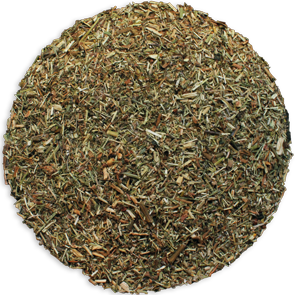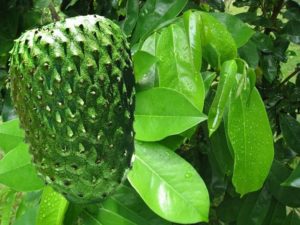Actúa como auxiliar en la disminución del colesterol y los triglicéridos.

Contiene: Muicle Justicia spicigera (Trata la presión arterial, purifica la sangre, desinflama, es antioxidante), Sanguinaria Sanguinaria canadensis (Sirve para bajar el colesterol y los triglicéridos ya que tiende a adelgazar la sangre para que no quede tan espesa por la grasa), Zarzaparrilla Smilax aspera (Favorece la eliminación de urea y disminuye el nivel de colesterol ya que baja la grasa, desinflama las venas y quema las grasas que no son comunes en el organismo), Hoja de nogal Juglans regia (Posee efectos hipoglucemiantes que reducen el nivel de azúcar en la sangre y también disminuye el nivel del colesterol malo o LDL de la sangre y contribuye a la formación de tejidos), Quinoa roja Chenopodium quinoa (Reduce significativamente el nivel de triglicéridos, colesterol total y colesterol LDL o «colesterol malo» en la sangre, a la vez que aumentaba el nivel de colesterol HDL o «colesterol bueno») y Árnica Arnica montana (Utilizado para fortalecer el corazón, para ayudar a reducir el colesterol en sangre y para prevenir los accidentes vasculares)
Tomar como agua de tiempo. Este producto no debe ser sustituido por ninguna dieta variada ni tampoco sustituye a ningún medicamento.

Siempre es bueno estar informado al 100% y consultar con tu médico de confianza antes de tomar cualquier suplemento.
Producto 100% natural, su uso está destinado al consumo como alimento.
EL CONSUMO DE ESTE PRODUCTO ES RESPONSABILIDAD DE QUIEN LO RECOMIENDA Y DE QUIEN LO USA
REFERENCIAS
1)Justicia spicigera Schltdl. and kaempferitrin as potential anticonvulsant natural products.
González-Trujano ME, Domínguez F, Pérez-Ortega G, Aguillón M, Martínez-Vargas D, Almazán-Alvarado S, Martínez A.Biomed Pharmacother. 2017 Aug;92:240-248. doi: 10.1016/j.biopha.2017.05.075. Epub 2017 May 24.PMID: 28551543
Justicia spicigera Schltdl. is a vegetal species traditionally used to control epilepsy, but scientific evidence is required to reinforce this activity. …In conclusion, these preliminary data give evidence of the potential of J. spicigera as possible antico …
Croaker A, King GJ, Pyne JH, Anoopkumar-Dukie S, Liu L.Int J Mol Sci. 2016 Aug 27;17(9):1414. doi: 10.3390/ijms17091414.PMID: 27618894 Free PMC article. Review.
Sanguinaria canadensis, also known as bloodroot, is a traditional medicine used by Native Americans to treat a diverse range of clinical conditions. …Despite their identification over 50 years ago, the alkaloids of S. canadensis have not been developed into …
Qi ZC, Shen C, Han YW, Shen W, Yang M, Liu J, Liang ZS, Li P, Fu CX.Appl Plant Sci. 2017 Apr 11;5(4):apps.1700005. doi: 10.3732/apps.1700005. eCollection 2017 Apr.PMID: 28439478 Free PMC article.
PREMISE OF THE STUDY: Although several microsatellite markers of Smilax aspera (Smilacaceae) have been reported in a previous study, due to universality issues in cross-population amplification, we have newly developed microsatellite markers for S. aspera bas …
4) Walnuts (Juglans regia) Chemical Composition and Research in Human Health.
Hayes D, Angove MJ, Tucci J, Dennis C.Crit Rev Food Sci Nutr. 2016 Jun 10;56(8):1231-41. doi: 10.1080/10408398.2012.760516.PMID: 25747270 Review.
5) Quinoa (Chenopodium quinoa Willd.): composition, chemistry, nutritional, and functional properties.
Abugoch James LE.Adv Food Nutr Res. 2009;58:1-31. doi: 10.1016/S1043-4526(09)58001-1.PMID: 19878856 Review.
Quinoa (Chenopodium quinoa Willd.), which is considered a pseudocereal or pseudograin, has been recognized as a complete food due to its protein quality. …Quinoa has a high nutritional value and has recently been used as a novel functional food becau …
6) Arnica montana L. – a plant of healing: review.
Kriplani P, Guarve K, Baghael US.J Pharm Pharmacol. 2017 Aug;69(8):925-945. doi: 10.1111/jphp.12724. Epub 2017 Apr 11.PMID: 28401567 Review.
OBJECTIVES: Arnica montana is a widely used therapeutic plant used traditionally to treat various ailments. The objective of this study was to evaluate the botany, phytochemistry and ethnopharmacology along with special emphasis given on pharmacological activity of …





